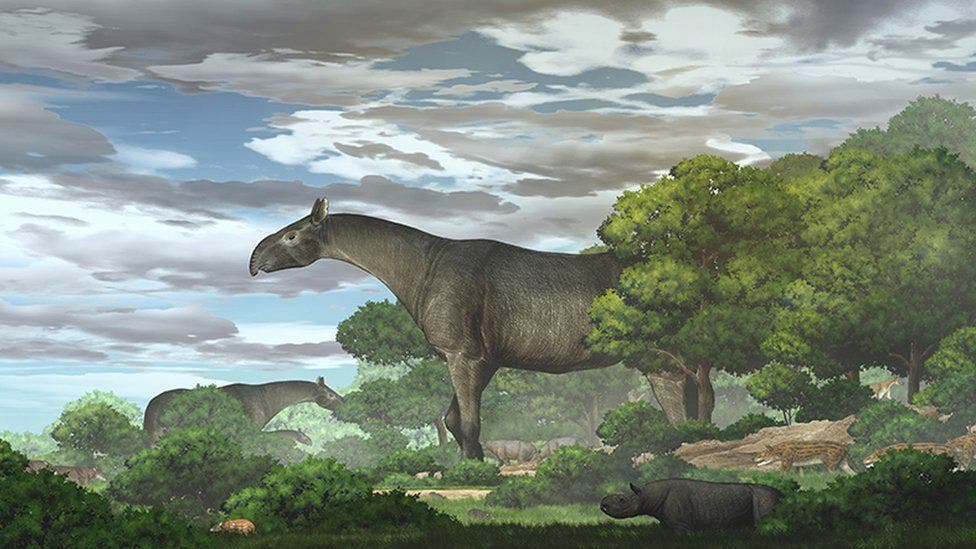
Although during the time of dinosaurs most mammals were no larger than a shrew, they soon took over after the mass extinction event caused by a huge asteroid impact. Left to fill in the ecological gaps after the dinosaurs were wiped out, mammals rapidly swelled in size, leading to the evolution of such giants as arctotherium (a fierce two-ton bear), glyptodon (a one-ton armadillo), megatherium (a three-ton sloth), and of course the, mighty mammoths.
Now, scientists have added a new member to this list of megafauna: a prehistoric giant rhino that weighed a staggering 21 tons and could feed on treetops as high as 7 meters (23 feet). Effectively, it weighed more than four large African elephants and was taller than a giraffe.
Although they are called giant rhinos, none of these ancient creatures actually had the familiar horns on their noses. These adaptations came much later down the lineage.
The discovery was made by paleontologists at the Chinese Academy of Sciences in Beijing, who first unearthed the giant rhino’s skull and jawbone fossils in the Linxia Basin in Gansu Province, China, close to the northeastern border of the Tibetan Plateau. The fossils were dated to 34 to 23 million years ago, firmly placing them in the Late Oligocene.
Later digs unearthed some body parts, including the atlas bone that connects the skull to the spine, as well as the three vertebrae that belong to a different individual.
Paleontologists had found giant rhinos before but a careful morphological comparison showed that the fossils belong to distinct new species dubbed Paraceratherium linxiaense. Seeing how it was closely related to another giant rhino that used to roam in Pakistan, the Chinese researchers estimate that P. linxiaense’s range must have spanned from the Mongolian Plateau to South Asia, right along the eastern coast of the Tethys Ocean — a former tropical body of saltwater that separated the supercontinent of Laurasia in the north from Gondwana in the south during much of the Mesozoic Era.
While the giant rhino was still alive, the Tibetan Plateau looked radically different, with many low-lying areas and a tropical climate. Only later did the plateau rise to the formidable heights the Himalayas are famous for.
The researchers, led by Tao Deng, the director of the Institute of Vertebrate Paleontology and Paleoanthropology at the Chinese Academy of Sciences, had been excavating the Linxia region since the 1980s. The region is famous for its fossils, many of which were first found by local farmers who referred to them as ‘dragon bones’.
Up until 2015, Deng and colleagues only found fragments of giant rhinos. It was only recently that they managed to uncover enough fossils to declare P. linxiaense a new species. Most giant rhinos and other megafauna went extinct after the climate dried up between 34 and 23 million years ago.
The extraordinary Paraceratherium linxiaense was described in a new study which appeared this week in the journal Communications Biology.


